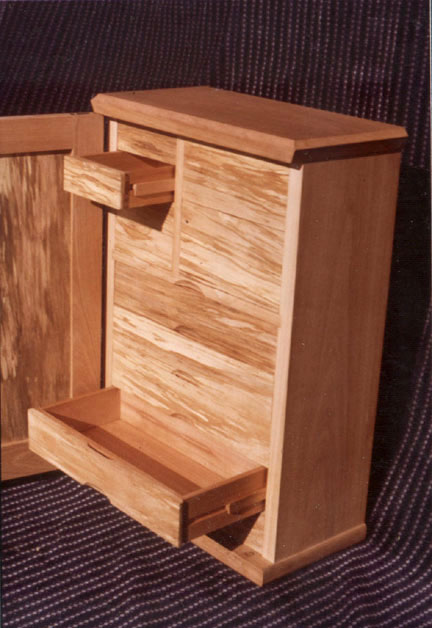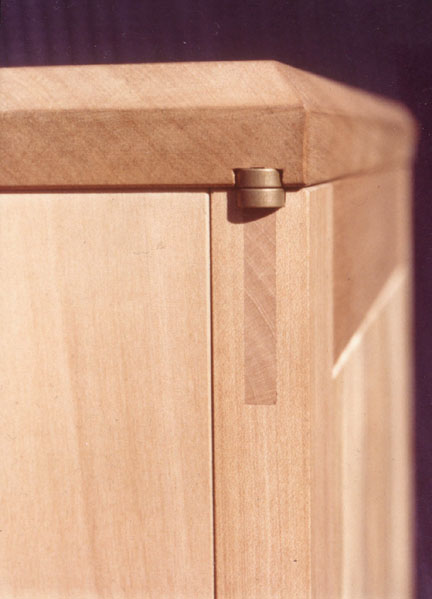
In the late 70's, the Mendocino Woodworkers Association invited Swedish cabinet maker James Krenov to give a weekend lecture on his woodworking. At that time, Krenov had several beautiful books of his work published, and was an international lecturer. Krenov works with hand made planes, and a more considered approach to fine woodworking, allowing for the subtleties of the wood and the process to emerge.
His interest in the Mendocino coastal community was such that the following year, he came for a longer visit, and gave a four week workshop on making planes, and techniques of fine woodworking. Each student was encouraged to make personal hand planes, and then construct a piece using these various techniques. I was fortunate to be able to attend.
In 1980, the College Of The Redwoods, in Fort
Bragg, California, offered Krenov a position as master teacher,
and built a Fine Woodworking program around his style. This school
is still going strong. Krenov retired from
teaching in 2002, and died in 2009. For more information, go to: http://www.crfinefurniture.com/
This is a wall hung chest of drawers to be used as a jewelry case. Most of the chest is Madrone, but the front door panel and the drawer fronts are spalted Sycamore. The top and bottom are doweled to the sides. The front door and the back are frame and panel, with mortised corners.

The drawer corners are all hand cut dovetails, with the Sycamore fronts applied to the drawer box. Each drawer is supported on floating runners, which allow for full extension of the drawer, like in a machinist tool box, allowing easy access to the back of each drawer. The top 3 levels of drawers are partial width. The bottom 5 drawers are full width.

This shows the mortise detail on the front door, which is supported by a pair of brass knife style hinges. The top edges are shaped with a shallow concave plane. Every surface was finished with hand planes I made during the class. No sand paper was used. Planing produces a superior finish, micro-burnishing the surface, rather than abrading it, with less time, noise, or materials expended.
